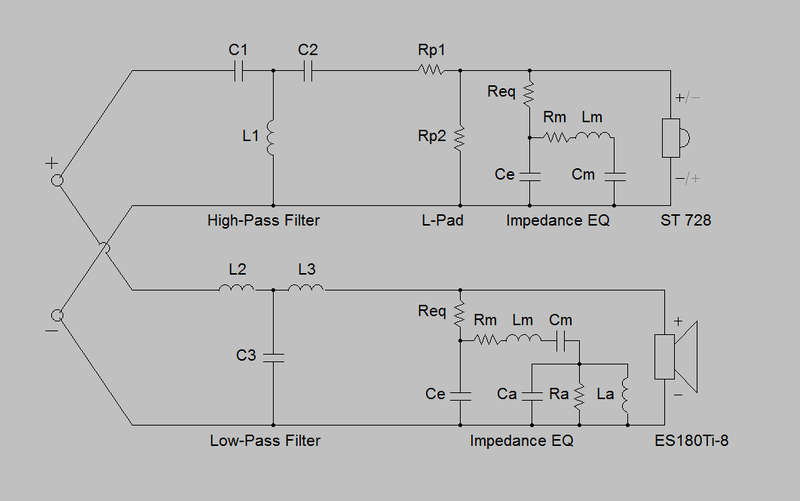So the only legitimate way to truly avoid diffraction is to router out cookies with the outer edges you need and glue and stack those cookies to build your enclosure. I have been considering this approach however my time restraints have been holding me back.
Basically this in a way.
An externally hosted image should be here but it was not working when we last tested it.
But the top of that is flat, sharp, and near the tweeter..... so not really going for it.
I do have a set of the Dayton Esoteric ES180TI drivers. It has been a thought to purchase a second set and do a 2.5 way. The problem I have with this is that I have yet to find a program that models a 2.5. I can lay it out as a 3 way in xover pro however it does not account for the sensitivity increase. So if you look between the lines you can see a basic start but nothing in data that allows me to know it will work as designed "I should say may work".
Last edited:
The basics of a 2.5 way are fairly straightforward where the baffle step transition is wholly within the woofer passband so the woofer higher frequency response is largely constrained by the same baffle conditions as the tweeter. Cross the two normally, ignoring the lower frequency shelf, then bring the other woofer in with a simple first order filter.
Thanks that confirms my basic understanding.
The basics of a 2.5 way are fairly straightforward where the baffle step transition is wholly within the woofer passband so the woofer higher frequency response is largely constrained by the same baffle conditions as the tweeter. Cross the two normally, ignoring the lower frequency shelf, then bring the other woofer in with a simple first order filter.
Original design for the Dayton ES180TI estoric and Morel ST728. 3rd order Butterworth at 2500hz.
Please provide thoughts on this 2 way design and adding in the .5 woofer at 200 hz down 1st order?
I can work on the low end with eq and will need to work on the tweeter pad based on the .5 change. Will also have to work on the impedance filter on the .5 end as well.


Please provide thoughts on this 2 way design and adding in the .5 woofer at 200 hz down 1st order?
I can work on the low end with eq and will need to work on the tweeter pad based on the .5 change. Will also have to work on the impedance filter on the .5 end as well.


It doesn't appear to be Butterworth and isn't at 2k5, so can I assume you were referring to the filters as if they were loaded by resistors? If I had a point it would be that these qualities should be applied to the acoustic response in order to display their known qualities.
Not that it is critical but for what it's worth a Butterworth filter normally has the responses out of phase by 90 degrees, which is a usable quality in some speakers.
Not that it is critical but for what it's worth a Butterworth filter normally has the responses out of phase by 90 degrees, which is a usable quality in some speakers.
- Status
- Not open for further replies.
- Home
- Loudspeakers
- Multi-Way
- Well I just dont know!